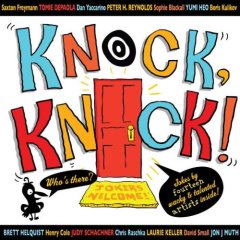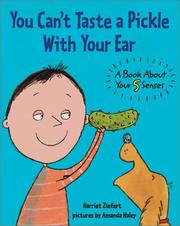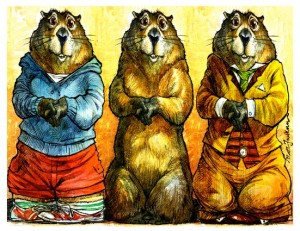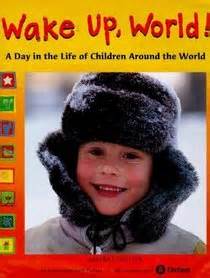Free, safe images for students
 Let’s imagine that you and your students have gone on a field trip to the Henry Ford Museum in Dearborn, Michigan (which, if you can, I highly recommend that you do so because the place is a-ma-zing.) Imagine one of your students wants to write about his favorite part of the trip – seeing the Oscar Meyer Wienermobile. He didn’t take any photos on the trip, so he wants to search for images online to add to his writing. Imagine what might happen if your student uses a typical search engine to look for images of wienermobiles.
Let’s imagine that you and your students have gone on a field trip to the Henry Ford Museum in Dearborn, Michigan (which, if you can, I highly recommend that you do so because the place is a-ma-zing.) Imagine one of your students wants to write about his favorite part of the trip – seeing the Oscar Meyer Wienermobile. He didn’t take any photos on the trip, so he wants to search for images online to add to his writing. Imagine what might happen if your student uses a typical search engine to look for images of wienermobiles.
Now imagine that you are a highly-prepared, tech-savvy teacher (easy to do, because you so are.) When your students want to add images of a wienermobile, or a titmouse, or any image, you guide them to search on Pics4Learning. It’s safe, it’s free, and the images are copy-right friendly.
Before you open up Pics4Learning, imagine the joy every artist will feel if you give your students a quick lesson on copyright first. Ask your students to imagine that they have worked tirelessly to create a fantastic work of art. Imagine posting a photo of said masterpiece online to share your art with family and friends. Now imagine that some random person online decides to right-click the photo of your masterpiece, copy and paste it, and use your work as if they made it. Imagine the outrage! Now your students may understand how artists feel when their images are copied and taken without any recognition or attribution. Just because you *can* right-click and copy an image doesn’t mean you *should*. Use a site like Pics4Learning instead, and there will be no breaking of copyright issues, or any uncomfortable discussions about when searching for images of blue-footed boobies.
Read MoreFrank Was a Monster Who Wanted to Dance
 Here’s a treat for you this Halloween: a rhyming picture book that will delight your little monsters while you hit the CCSS of Fluency and Phonics & Word Recognition.
Here’s a treat for you this Halloween: a rhyming picture book that will delight your little monsters while you hit the CCSS of Fluency and Phonics & Word Recognition.
Frank was a Monster Who Wanted to Dance by Keith Graves is simple, spooky, silly fun. Frank’s dancing delights the audience until his body parts start to come loose, but even a cold shoulder from the crowd (see what I did there?) can’t diminish Franks’s love of performing.
There are plenty of simple rhymes for early elementary students to catch (“ants in his pants”, etc.) and I love that students can listen to them while they enjoy this story on TumbleBooks. Many school, public, and state libraries have subscriptions to this great website where kids can hear books read aloud. TumbleBooks has picture books, chapter books, fiction and nonfiction, all kinds of titles to help students build fluency. An extra bonus: TumbleBooks also has a section of lesson plans for teachers, including a K-2 lesson plan for Frank was a Monster Who Wanted to Dance!
So read aloud this book to your class, or log into TumbleBooks and project it so the entire class can enjoy it. If your little wigglers are anything like mine, they’ll want to move their bodies like Frank did, so on repeated readings, encourage listeners to act out the text. Kids can mime brains flopping out, arms falling out of sleeves, etc. For Halloween, or for anytime your mini-monsters need an active read-aloud, this book does the trick.
For more about the author/illustrator, please visit: keithgravesart.com.
Read MoreGo Ahead and Judge
 As I’m weeding the youth collection in my public library, I am finding some gems. I know the old adage is “you can’t judge a book by its cover”, but really? If you had never heard of Little Women before and you saw this audiobook cover, what do you think the story would be about? Something disconcerting and yet intriguing, judging by the glassy-eyed stare of these girls! Little (Zombie) Women!
As I’m weeding the youth collection in my public library, I am finding some gems. I know the old adage is “you can’t judge a book by its cover”, but really? If you had never heard of Little Women before and you saw this audiobook cover, what do you think the story would be about? Something disconcerting and yet intriguing, judging by the glassy-eyed stare of these girls! Little (Zombie) Women!
So this week I’m recommending a simple activity that can be used with many books: redesigning the cover. If your library has some ugly book covers (I know mine has several), ask kids to read the book and make a new cover that shows the main characters in a key plot moment. It’s a great way for kids to demonstrate reading comprehension (those Key Ideas & Details of the Common Core? Got it covered!) and it can be a nice alternative to or an option for a book report.
With new book covers designed by fellow students, those ugly books may have a renewed life, because even if we shouldn’t, we do judge books by their covers.
Read MoreKnock, Knock!
 Trent, one of my preschool pals, couldn’t stop giggling as he told me this gem, “So, a horse walks into a bar and the bartender says, ‘Hey, why the long face?'” Kids love good jokes – and they don’t seem to mind the bad jokes, either! Joke books are perfect for early and reluctant readers because:
Trent, one of my preschool pals, couldn’t stop giggling as he told me this gem, “So, a horse walks into a bar and the bartender says, ‘Hey, why the long face?'” Kids love good jokes – and they don’t seem to mind the bad jokes, either! Joke books are perfect for early and reluctant readers because:
1. Jokes are short.
2. You can flip through pages instead of reading sequentially so the thick books aren’t intimidating.
3. Humor makes them intrinsically motivating.
4. With “knock, knock” jokes, kids can already read some of the most important words (and you can use them for a great mini-lesson on those letter-sound combos of kn and wh.)
5. Joke books build Fluency and hit Range of Reading (two CCSS with one stone!)
My latest favorite joke book is Knock, Knock! illustrated by fourteen artists and published by Dial Books for Young Readers. Each artist chose a different “knock, knock” joke to illustrate. The repetition of words like “knock, knock” and “who’s there” plus the clues from the art make this book one most kids can read successfully, especially if you read it aloud first and let students guess what the punchlines to the jokes will be.
Rereading joke books in order to learn the jokes for future telling is probably the most fun way to build reading fluency. Make Knock, Knock! and other joke books available during choice reading time, then give your budding comedians a set time to tell jokes. This can be a one-time laugh-fest, or an ongoing event in your classroom. I liked to claim the end of the day as “Open Mike Time”. If students could gather their belongings and prepare for departure quickly, we’d have time for an “open mike” session where kids could come to the front of the room and tell a joke. This encouraged kids to get ready without dawdling, and for those who liked joking all day long, I could say, “Suzy, we won’t have time for Open Mike if we don’t use this time wisely.” Suddenly, being a class clown (at the appropriate time) is a good thing!
Read More
You Can’t Taste a Pickle With Your Ear
 When it comes to Common Core State Standards, the one that I think is the most fun is Range of Reading. (I know, I know, all the CCSS are fun, but this one is the most fun!) Range of Reading: Informational Text means we want kids to “read and comprehend informational texts, including history/social studies, science, and technical texts.” In other words, we can share all kinds of cool nonfiction books with our students, and I have a fun pick this week.
When it comes to Common Core State Standards, the one that I think is the most fun is Range of Reading. (I know, I know, all the CCSS are fun, but this one is the most fun!) Range of Reading: Informational Text means we want kids to “read and comprehend informational texts, including history/social studies, science, and technical texts.” In other words, we can share all kinds of cool nonfiction books with our students, and I have a fun pick this week.
You Can’t Taste a Pickle With Your Ear: A Book About Your 5 Senses by Harriet Ziefert with pictures by Amanda Haley is an informational picture book with a great sense of humor. It has some nice text features like a table of contents, an introduction, a conclusion, and questions at the end of each mini-chapter for discussion. The information presented about the five senses is appropriate for early elementary students and will work well for any “all about me” units as well as for health and science studies.
Read aloud the title You Can’t Taste a Pickle With Your Ear and you’ll get students grinning. You can read the 32-page book in one sitting, or read each mini-chapter devoted to a different sense one at a time. For an art activity that will bring together all the information in the book (so we’re Integrating Knowledge & Ideas as well as working on Range of Reading), have students make a self-portrait and label the body parts they use for each of the five senses. To get those Nature Smart/experiential learners really involved, bring in pickles for the class. Students can write about how they used each of their five senses as they look at, smell, touch, hear (long crunchy pickles that snap in half work best), and taste. Remind your students again about the title of the book (but keep paper towels on hand in case any of your students feel the need to test for themselves.)
Read MorePicture Book Update!
 I want to share the latest in the epic saga of my first published picture book. (Have I mentioned lately that I sold my first picture book to Charlesbridge? And that it is set to hit the shelves in 2015? And that my husband, the award-winning author/illustrator Matt Faulkner will illustrate it? I have? Oh.)
I want to share the latest in the epic saga of my first published picture book. (Have I mentioned lately that I sold my first picture book to Charlesbridge? And that it is set to hit the shelves in 2015? And that my husband, the award-winning author/illustrator Matt Faulkner will illustrate it? I have? Oh.)
On February 2, 2013, my lovely editor called to tell me that she wanted to buy my manuscript about a groundhog. (It was also my birthday, which just happens to be Groundhog’s Day, it was kismet.) Since then I’ve been beaming. I’ve been submitting manuscripts for thirteen years. I revised this particular story twice for my editor, and it feels like such a validation of all my hard work to have been told “Yes!”
Yesterday, I got an email from my editor. She’s so excited to send me my first round of official edits on the manuscript. Now, I knew edits were coming (my editor and all my book-making friends let me know my story will go through more changes than a top model at a fashion show), but I was kind of hoping for a short list consisting of suggestions like “you need a comma here.” Nope. Lots of things to tweak, examine, consider, and change. First round of edits.
You know that look your students give you when you hand back a paper for them to revise? Tell them to get used to wearing that face. All writers at all levels have to revise, if we are brave enough to make our writing the best it can be. Bring on round one!
Read MoreWake Up, World!
 “We all should know that diversity makes for a rich tapestry, and we must understand that all the threads of the tapestry are equal in value no matter what their color.” – Maya Angelou
“We all should know that diversity makes for a rich tapestry, and we must understand that all the threads of the tapestry are equal in value no matter what their color.” – Maya Angelou
Books that celebrate diversity are perfect at the beginning of a new school year. We want our students to know that all of us are valued because of, not in spite of, the unique characteristics we possess. Wake Up, World! A Day in the Life of Children Around the World by Beatrice Hollyer in association with Oxfam shows students in an accessible way what life is like in different parts of the world.
Meet eight children from places like Vietnam, Ghana, Brazil, and the United States. From waking up and eating breakfast, to going to school and doing chores, to going to bed (or hammock), readers will love the photos and descriptions of what life is like for kids just like them in other countries. (You will love how easy it is to work in Range of Reading and Integrating Knowledge & Ideas with one book, and even tie it into a mapping unit if you are so inclined.)
One of the children, Natali, is from California in the United States. With the paragraphs about Natali especially, your students may find themselves saying “that’s just like me!” or “I don’t do that!” You can play a game called “Cross the Line” with information you find in this book. Line all of your students on one side of your classroom, and either imagine a line down the middle of the room, or put one there with masking tape (and thank your custodial staff for being so nice to teachers who put down tape on the floor.) Choose situations from the book like “if you drink walk to school like Linh from Vietnam does, cross the line.” Students can easily see who shares that characteristic with them. Wake Up, World! is also an ideal writing prompt. Your students can write about what they eat for breakfast, etc. for a book like “Our Classroom Wakes Up”or for individual books.
For more information about Oxfam, please visit oxfam.org.
Read More






